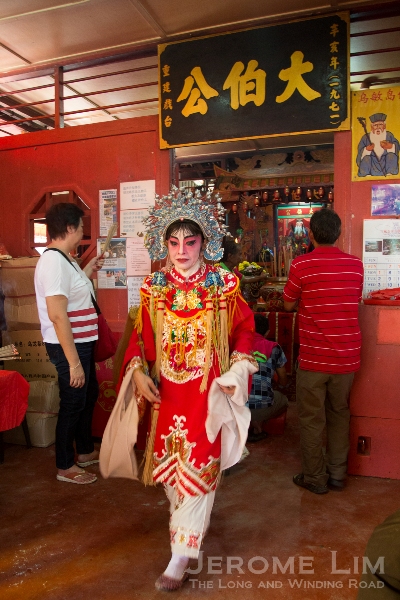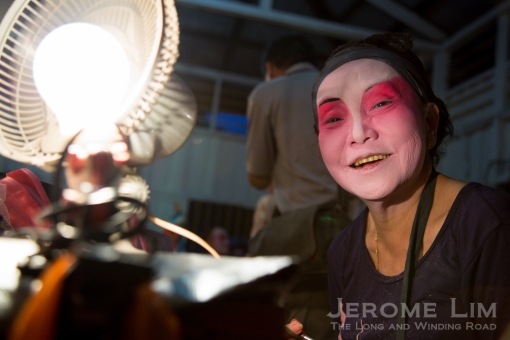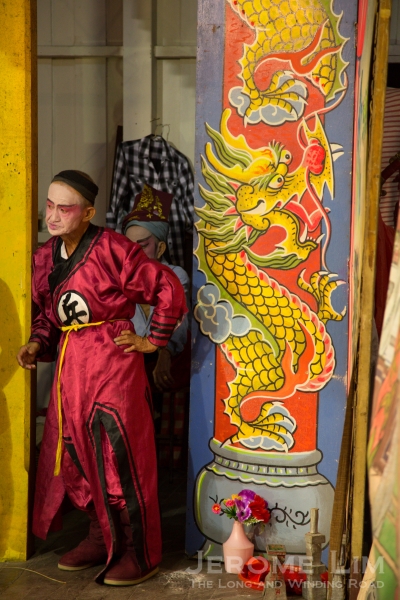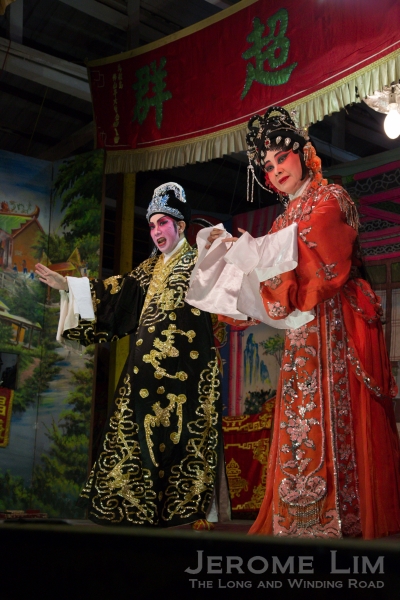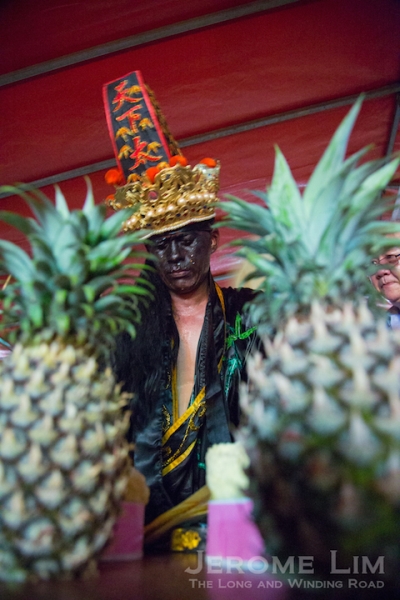Puppet shows once made appearances around Taoist temples scattered all across Singapore. Like the Chinese street opera and the more modern getai performances, they were usually put up for the pleasure of visiting Taoist deities on their earthly sojourns, or for hungry ghosts who as belief would have it, roam the earth when the gates of the underworld are opened during the Chinese seventh month. Puppet shows also found great appeal with the common, especially amongst the young ones. These days however, the distractions of the modern world hold sway and the appeal of tradition seems to have waned. Just a handful of troupes still perform around today leaving supporting craftsmen such as Mr Leong Fong Wah, whose lifetime’s work has been in painting and putting together puppet stages, a dying breed.

A typical Chinese puppet stage is really an assembly of pieces of plywood on which colourful decorations and backdrops are painted on one side and reinforced on the other. All it takes is a few weeks to add the decorative work before a stage can be put together. This quick turnaround time, the lack of a customer base, and the fact that a stage can be used and reused for as long as ten years, does mean that there is little in terms work in the area for the business that Mr Leong runs, Leong Shin Wah Art Studio. Having been started in the 1940s by Mr Leong’s father, whose name the business is identified with, the workshop must have been involved in putting together a countless number of stages. With nothing in way of puppet show stage orders in sight beyond an order that Mr Leong is currently in the process of fulfilling, this last stage that he is building may be one of the last, if not the last, traditional puppet show stages being made not just at Mr Leong’s workshop, but also in Singapore.



A typical traditional puppet show stage set up:


Chinese Puppetry in Singapore:
A lifelong passion pulling strings (Henghwa string puppet troupe)
The last performance of the Sin Sai Poh Hong puppet troupe (Teochew Rod Puppet Troupe)





















































































